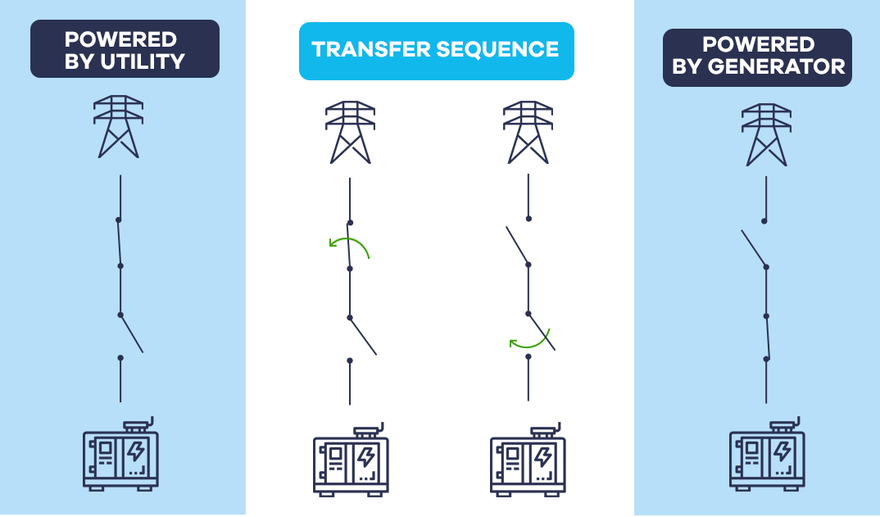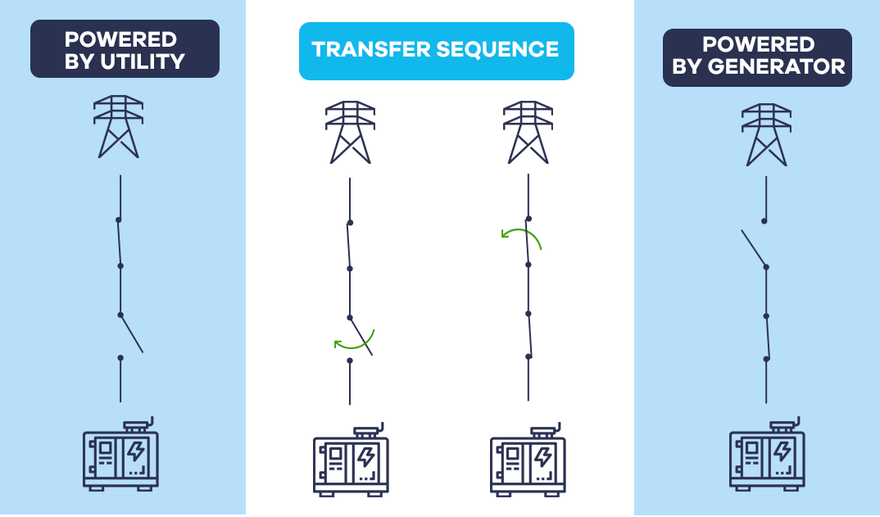Data centers are at the heart of every digital interaction between consumers and businesses. As data consumption continues to surge, the prospect of unplanned downtime in the data center poses a serious risk to organisational stability.
According to Gartner, the average cost of unplanned downtime amounts to $5,600 per minute, equating to an average loss of $336,000 per hour. Undoubtedly, the extent of financial loss will vary depending on the scale of data center operations; however, common costs attributed to unplanned downtime include, loss of sales, reduced productivity, reputational damage, and loss of, or infiltration of, data.
Data center downtime can be caused by a multitude of factors, such as power utility failure, an electrical fault within the power distribution system causing issues upstream, or human error. In fact, human error is cited by the Uptime institute as the largest cause of unplanned data center outages.
Transfer switches
To successfully mitigate the risks posed by unplanned downtime, it is necessary for data center operators to employ reliable and redundant power supplies that are well equipped to maintain critical operations in the event of an unexpected power failure or inefficiency. Transfer switches are used in the data center to facilitate redirection of the power load to an alternative supply in the event of electrical failure in the primary power supply. Transfer switches can be interlock based or automatic.
Interlock switches are operated manually, with no capability for intelligence. In the event of a power failure, power will remain down until an operator goes to the location of the switch and initiates the alternative power supply. Due to the mission critical nature of data center operations and the complexity of their power architecture, interlock based transfer does not provide a suitable level of power redundancy required to maintain continuous power amidst the plethora of potential power failure scenarios in the data center.
PLC Automatic Transfer?
PLC Automated Transfer offers a more efficient method of switching between power sources in mission critical applications. The load will automatically switch to the redundant power supply in the event of power failure or when an instability is detected in the primary power supply. Once the primary power supply has been restored and normal conditions are met, the load will be automatically switched back to the primary power source. A key benefit in this aspect is that no operator intervention is required to facilitate the switching process, improving safety and response efficiency to critical issues or failures. Let’s not forget that human error is a key cause of power failure in the data center, so removing this element from the switching process ultimately reduces risk.
Transition type
The chosen design of your PLC-based transfer system will determine what happens when the power goes out and will be the difference between maintaining a continuous power supply or a near continuous power supply. This choice is one of the most important to be made when specifying automatic transfer switches in the data center as power availability is critical to operations.
In open transition, systems experience a ‘break before make’ transfer. This means that the transfer switch breaks contact with the faulty power supply before making a new connection with the backup power supply. This momentary transfer of power when electricity flow is interrupted prevents back feeding, which occurs when the secondary power supply, for example, the generator power feeds back into the utility power.
However, ultimately open transition may not be the best choice in a mission critical setting that strives for 100 per cent power availability, as some loads are negatively affected by the slightest loss of power and need to be transferred with zero interruption of power.
In closed transition, systems experience a ‘make before break’ transfer. This means that the transfer switch makes contact with the secondary power source before breaking contact with the primary power source. With closed transition both power sources will momentarily run in parallel, eliminating any interruption to power. Closed transition involves a more complex sequence of events than open transition and cannot be carried out unless two primary conditions exist:
- The overlap time when both sources are paralleled must be very short, usually no more than 100 milliseconds;
- In closed transition, both sources can only be closed if they are synchronised in phase, voltage, and frequency. Synchronization may be accomplished passively or actively.
To explain:
- Passive synchronisation – waits for the power supplies to fall into synchronisation. Passive synchronisation is generally the cheaper option, however there is no guarantee that the backup and primary power sources will fall into sync, this can cause damage to the generator and other system components;
- Active synchronisation – actively drives the power sources into synchronisation. This method is more costly as it requires a generator synchronizer and additional control signals to actively drive source synchronisation.
Although the complexity of closed transfer can incur higher capital costs, ultimately, closed transfer presents an optimised switching process in the data center and is better engineered to mitigate the risk downtime in critical loads. This creates a greater sense of confidence amongst operations staff, which in turn can have a positive impact on system testing as operators are more inclined to conduct tests without fear of instantiating unplanned downtime.
The more testing conducted on the system the more reliable it will become as the system is refined to overcome any issues encountered during tests. Regardless of the transition type selected, it is imperative that a proactive approach to maintenance and service is taken to preserve mission critical operations.



